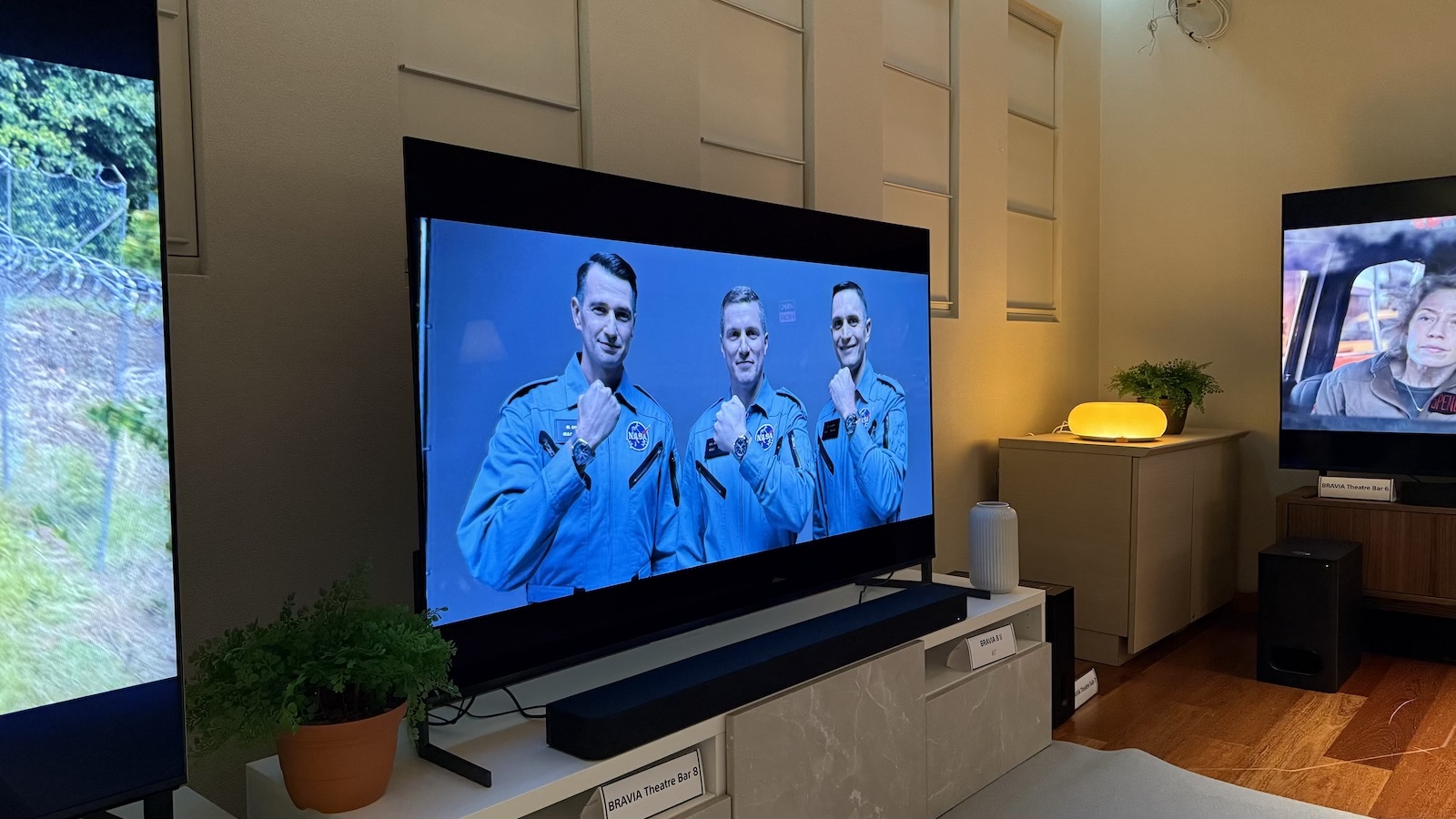What is Apple CarPlay? How it works, the best apps and features
Turn your car into an iOS device
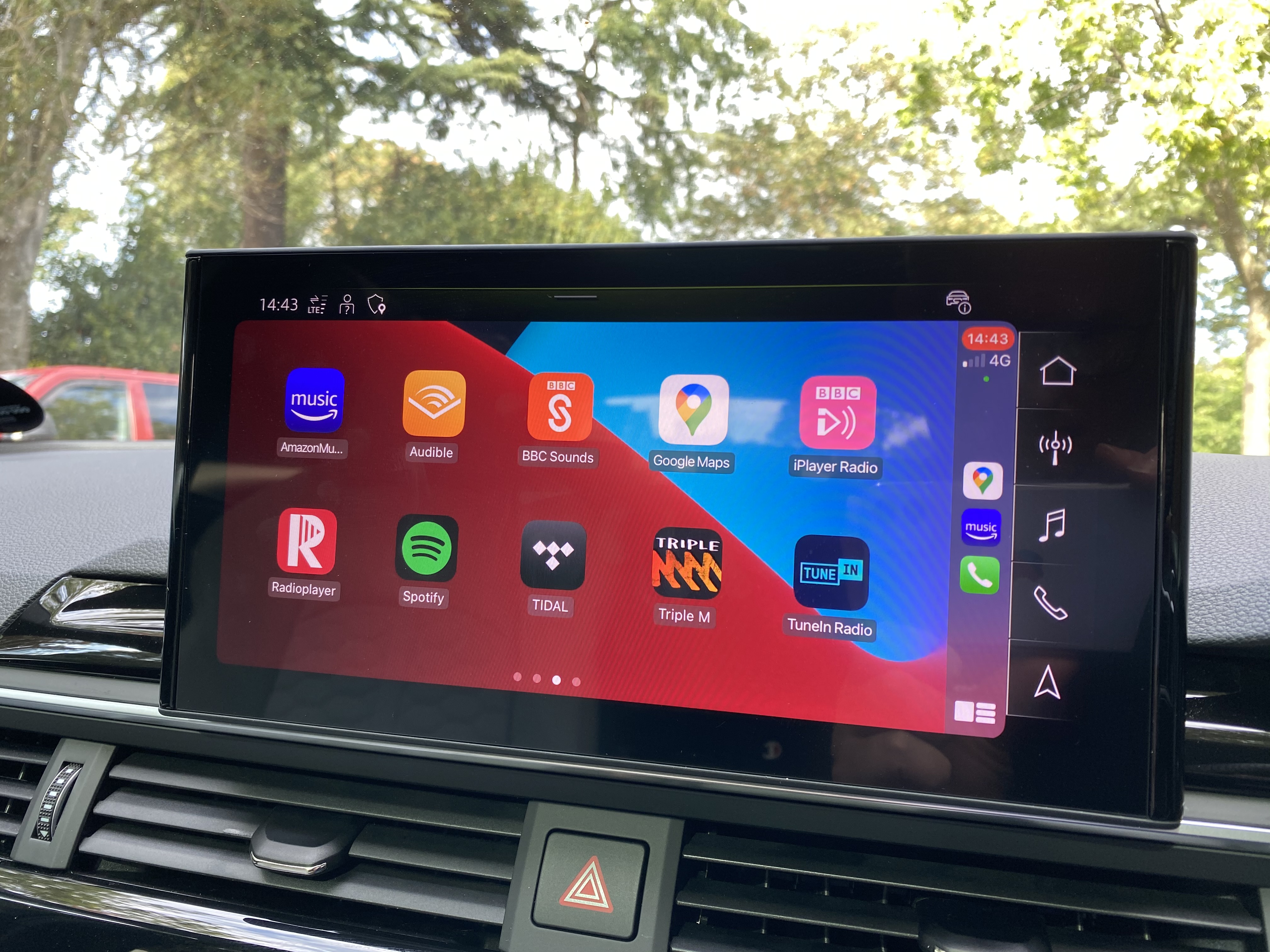
So what is Apple CarPlay? Think of it as a way of mirroring some of the key features and functions of your iPhone and its iOS operating system on an in-car display.
In theory, it's a marriage of convenience and safety: you can tuck your iPhone away, but still safely access and use a decent selection of key apps, including Messages, Phone, Music and Maps. The number of compatible apps is constantly expanding and with every new version of Apple's iOS comes a tweaked interface and a sprinkling of new features to keep the system feeling as up to date as your shiny new iPhone 12.
So how can you get it? And which car manufacturers are supporting Apple CarPlay? Read on for all the details...
What do you need for Apple CarPlay?
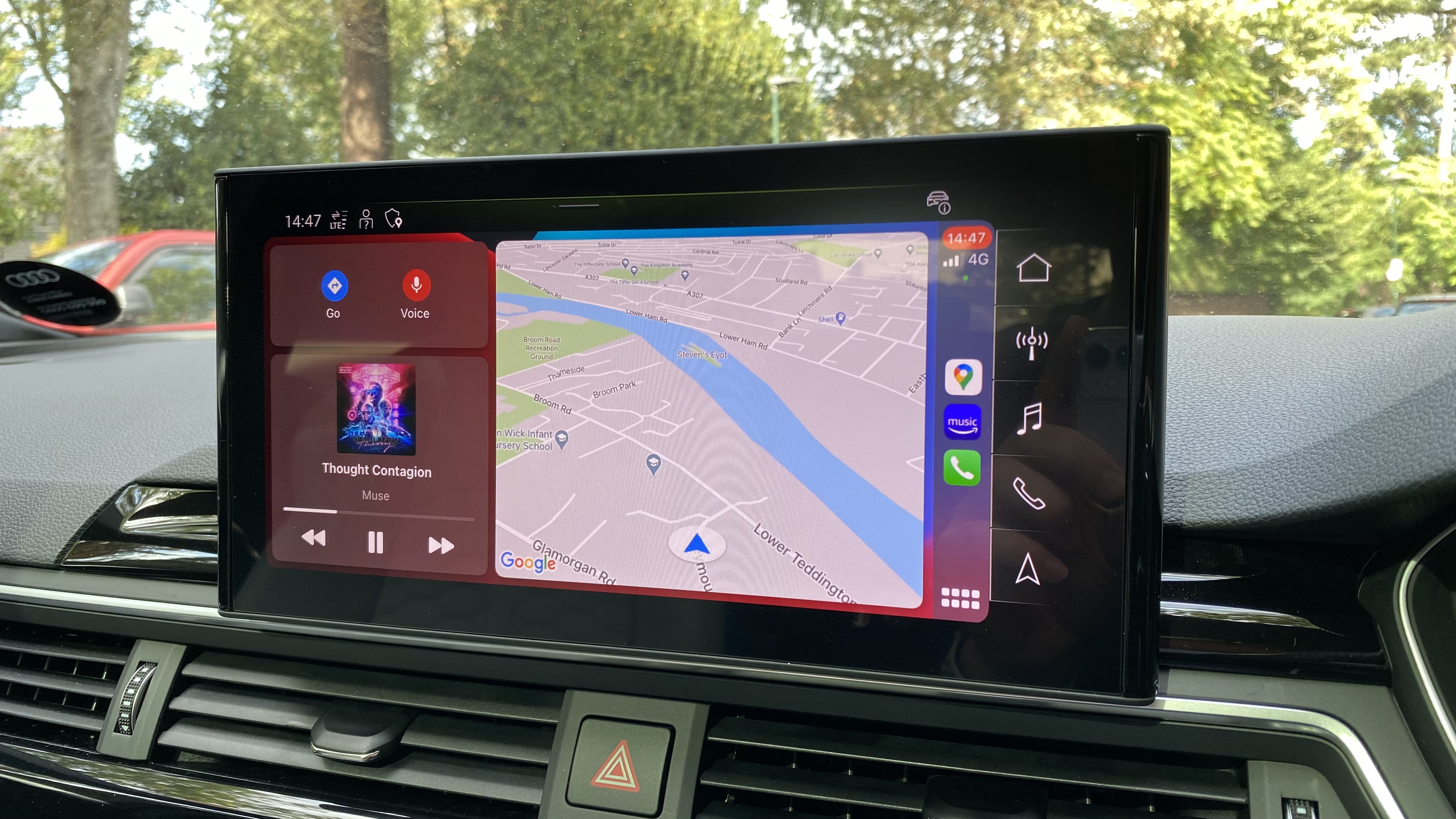
An iPhone, for starters. CarPlay supports all iPhones since the iPhone 5 that run on iOS 7.1 or later. You'll also need access to an in-car system or head unit that supports CarPlay. Both the system and your phone need to handshake before you can start using all the various elements of CarPlay.
You're probably going to need a Lightning-to-USB cable too unless your car happens to work with CarPlay wirelessly, a feature that doesn't have particularly wide support from manufacturers at the time of writing.
Siri, Apple's voice-controlled assistant, is another piece of the jigsaw - you can't access CarPlay unless Siri is activated on your phone. This is because voice-control has a big part to play when it comes to making calls, sending messages and navigation, especially where safety is concerned.
- Burmester Surround Sound System (Mercedes-Benz C-Class) review
- Best Apple deals: iPad, iPhone, Apple TV
Which car brands support Apple CarPlay?
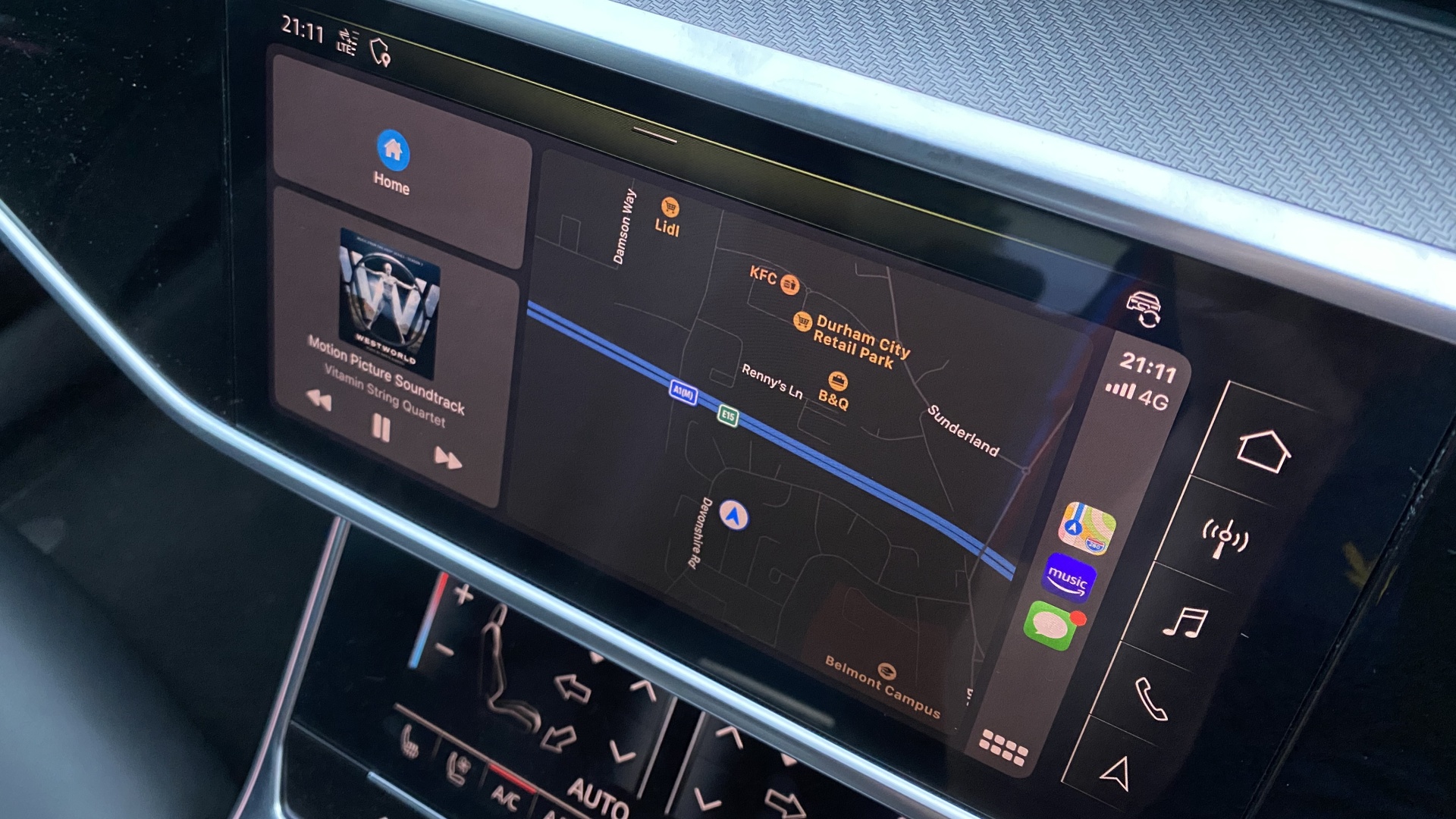
Currently, there are over 40 manufacturers with CarPlay-compatible cars, with the system available on well over 500 models. Cars with CarPlay are available from Alfa Romeo, Audi, BMW, Ferrari, Jaguar, Mercedes-Benz, Nissan, Porsche, Seat, Volkswagen and Volvo.
When CarPlay initially rolled out, it tended to be an optional extra, so you'd need to factor in additional funds. When CarPlay was introduced by BMW back in 2016, it had a subscription model. You could either pay a lump sum as a one-off fee for lifetime CarPlay support, or you were charged an annual subscription. Thankfully, most manufacturers are now providing CarPlay support as standard and BMW finally ditched its subscription model in December 2019.
If you're going down the second-hand route, you might be able to retrofit CarPlay for a fee if it's not in the spec of the car. It really depends on the car manufacturer and model.
Another route for adding CarPlay to an older car is to go for an aftermarket installation - manufacturers such as Pioneer, JBL, Kenwood and Alpine all offer their own CarPlay head units.
How do you connect Apple CarPlay?
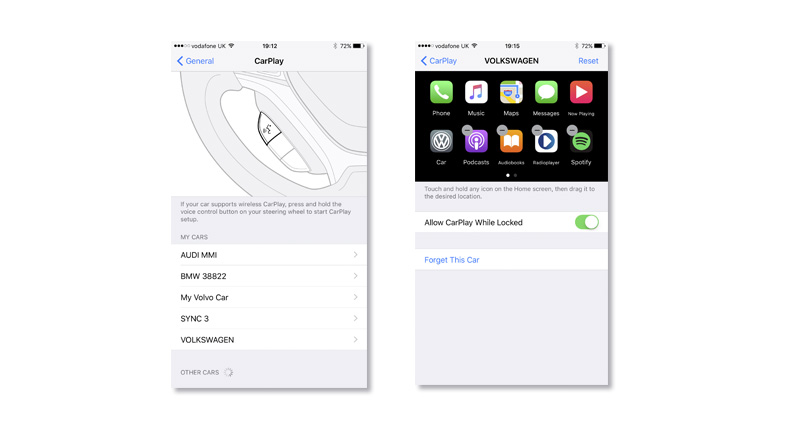
CarPlay primarily works through a wired USB connection to any iPhone with a Lightning socket, so from iPhone 5 all the way to the current iPhone 8, 8 Plus and iPhone X.
BMW's 2017 5-series was the first car to offer a wireless CarPlay solution, so you don't even need to take your iPhone out of your pocket.
If the only Apple device you own is an iPad, then we're afraid you're out of luck - CarPlay isn't compatible with any iterations of the Apple tablet.
How does CarPlay work?
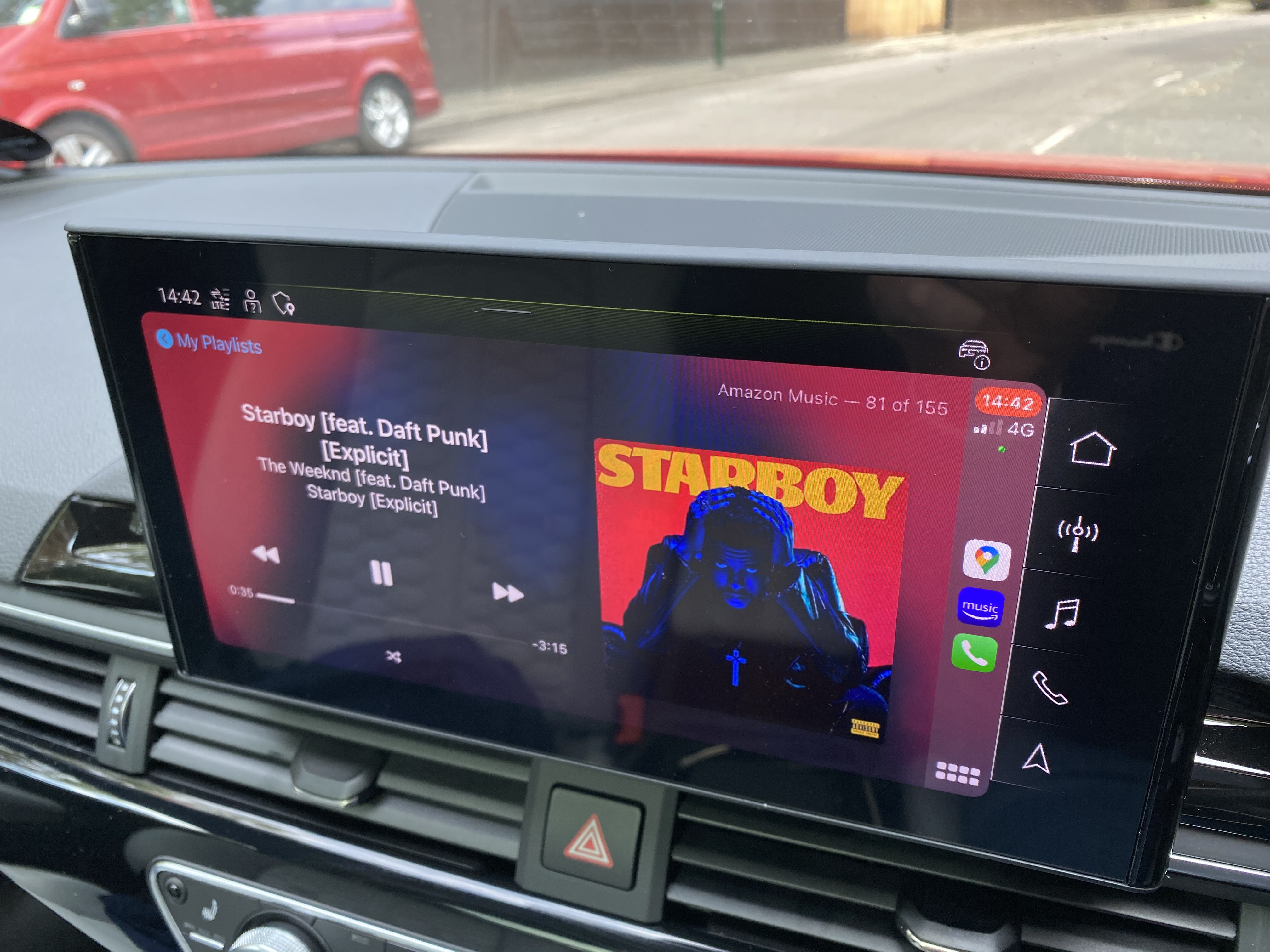
All the action happens through the main in-car display. Once you've connected your iOS device via Lightning (or wirelessly if you own a compatible BMW) all compatible apps stored on your device are presented as they would be on the screen of your iPhone. CarPlay can adapt to various screen configurations, whether they're in portrait or landscape.
The basic layout remains the same across car manufacturers. The main Apple apps dominate the first page - swipe across and you'll see all the third-party apps available on your device.
Many (but not all) of your iOS apps will be at your disposal. Apple Music, Podcasts, Maps, Messages, Phone and even Calendar are only the press of a touchscreen away.
The iOS 13 update, which rolled out in September 2019, added Dashboard which gives the home screen a new alternative look, splitting out areas for maps (including third-party map apps), media information, Calendar or Siri suggestions.
At launch there wasn't a huge number of compatible third-party apps, but the numbers are slowly rising and some of the most popular streaming services to have made the leap are Spotify, Tidal, Deezer and Amazon Music.
Besides the app icons, you can also see the time, bars to indicate the strength of the available network signal - and there's even an icon that mirrors the 'home' button found at the bottom of iDevices. This stays visible irrespective of the app you're using, so you can quickly jump back to the home screen.
The arrival of Apple's iOS 10 operating system did bring some changes to the layout, including the ability to customise your home screen as you would on an actual iPhone. You can drag and drop compatible apps in the CarPlay setting on your Apple smartphone. You can also see how CarPlay will look on your vehicle's display. If Spotify is the best music streaming service for you, it can be bumped up to the top spot in CarPlay.
iOS10 also introduced icons for the three most recently used apps at the edge of your display. There's a slot for navigation, one for communication, and one entertainment app - you can't have Spotify, Apple Music and Tidal up there at the same time, but you can have Messages, Maps and Apple Music, say.
You can switch apps by tapping on them using your car's touchscreen or you can cycle through them using physical controls. Obviously, this depends on your car's particular infotainment layout.
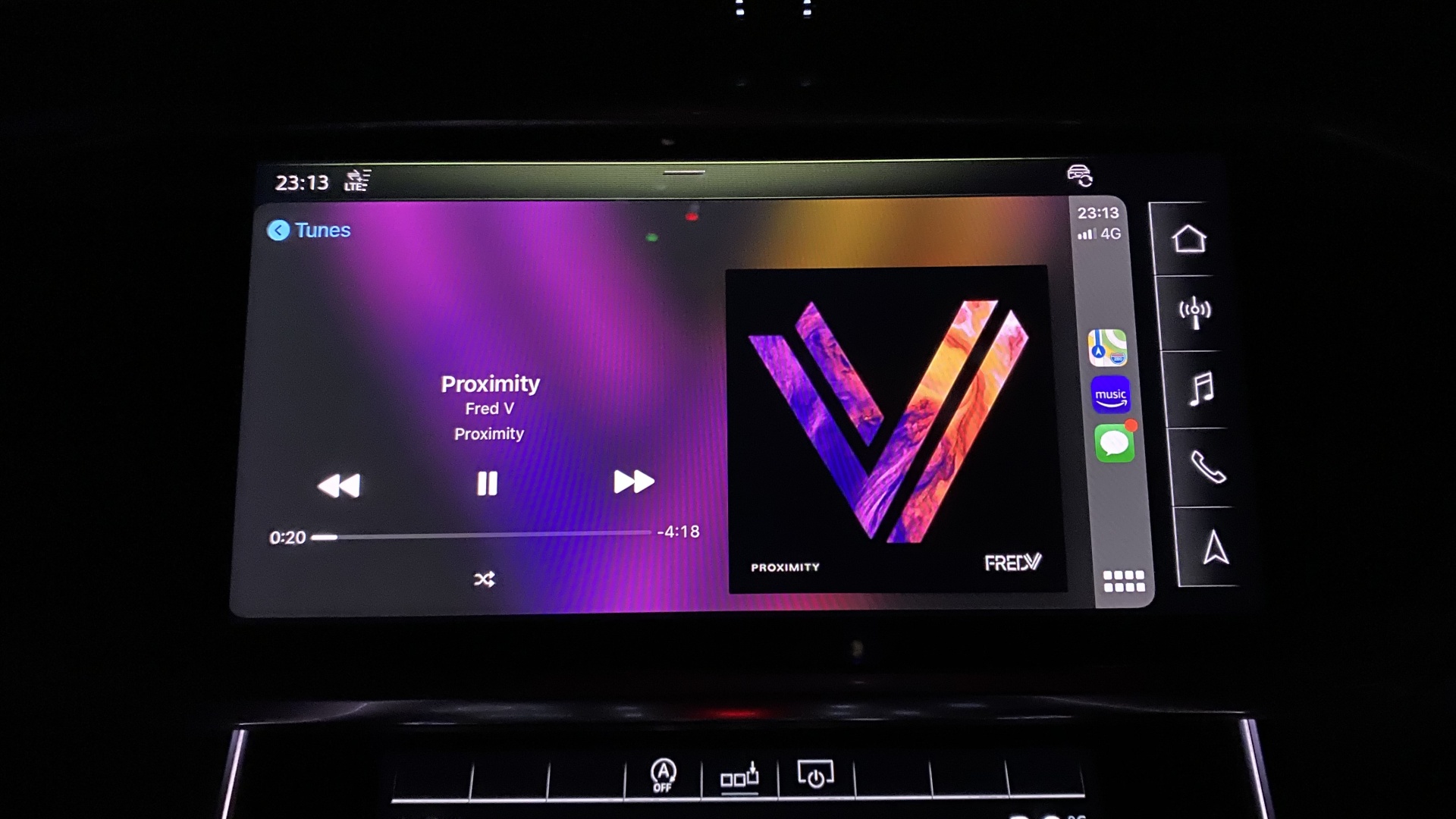
The arrival of Apple's iOS 10 operating system did bring some changes to the layout, including the ability to customise your home screen like you can on an actual iPhone. You can drag and drop compatible apps in the CarPlay setting in your Apple smartphone. You can also see how CarPlay will look on your vehicle's display. If you've always wanted to bump Spotify to the front of the queue, now you can.
You can also now see icons for the three most recently used apps at the edge of your display. There's a slot for navigation, one for communication and one entertainment app - you can't have Spotify, Apple Music and Google Play up there at the same time, but you can have Messages, Maps and Apple Music, say.
You can switch apps without going via the main home screen, which you had to do on the previous version of CarPlay. It's done by tapping on them using your car's touchscreen or you can cycle through them using physical controls. Obviously, this depends on your car's particular layout.
Which are the best CarPlay apps?
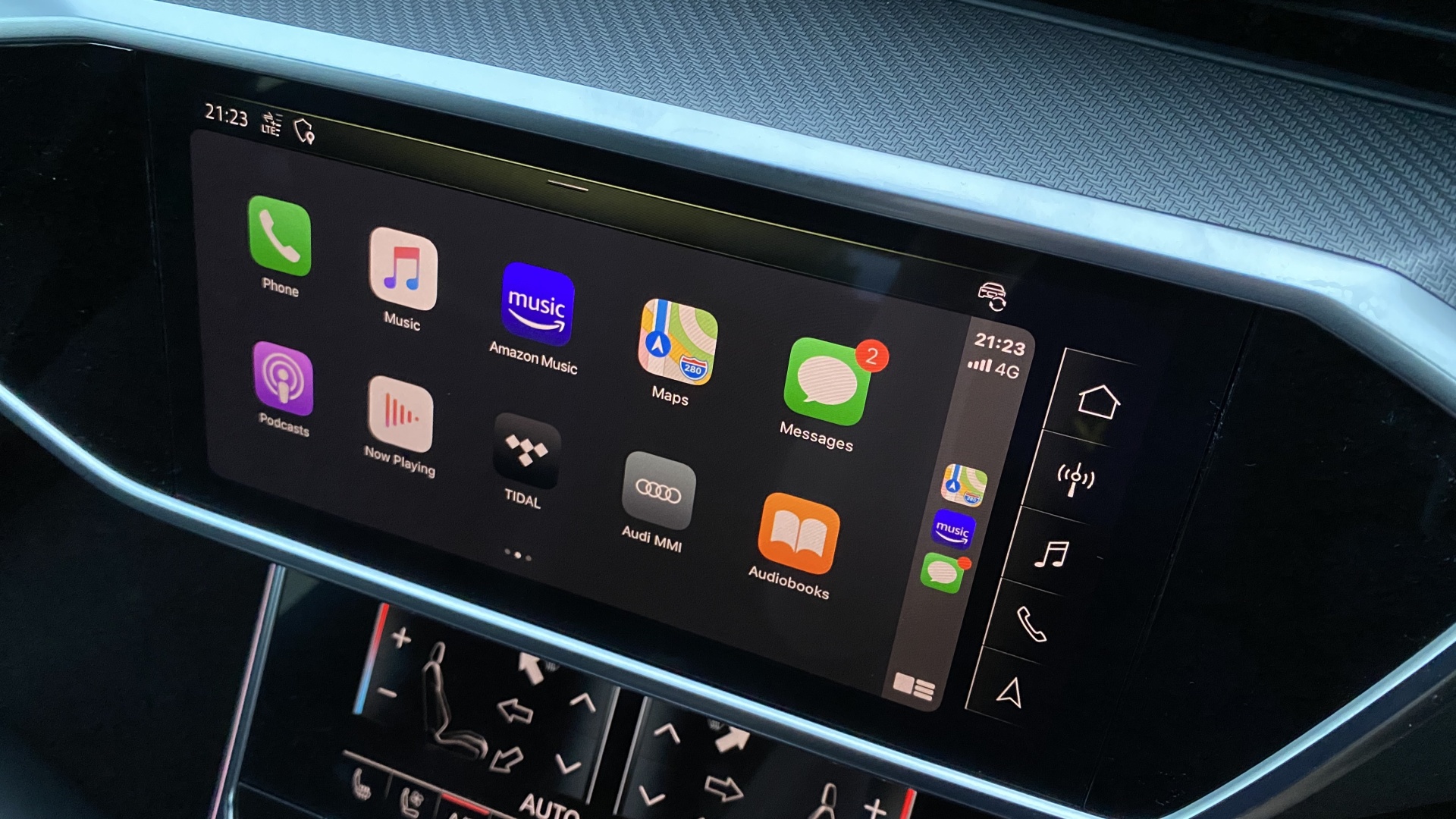
Here's a list of some of the best music and podcast apps that work with CarPlay...
BBC Sounds
Audible
Overcast
Podcasts
MORE:
13 cars audio milestones from AM to MP3
Burmester High-End Surround Sound System (2020 Porsche 911) review
Naim for Bentley premium audio system (2020 Bentley Continental GT) review
See all our Apple reviews
Get the What Hi-Fi? Newsletter
The latest hi-fi, home cinema and tech news, reviews, buying advice and deals, direct to your inbox.
Andy is Deputy Editor of What Hi-Fi? and a consumer electronics journalist with nearly 20 years of experience writing news, reviews and features. Over the years he's also contributed to a number of other outlets, including The Sunday Times, the BBC, Stuff, and BA High Life Magazine. Premium wireless earbuds are his passion but he's also keen on car tech and in-car audio systems and can often be found cruising the countryside testing the latest set-ups. In his spare time Andy is a keen golfer and gamer.

